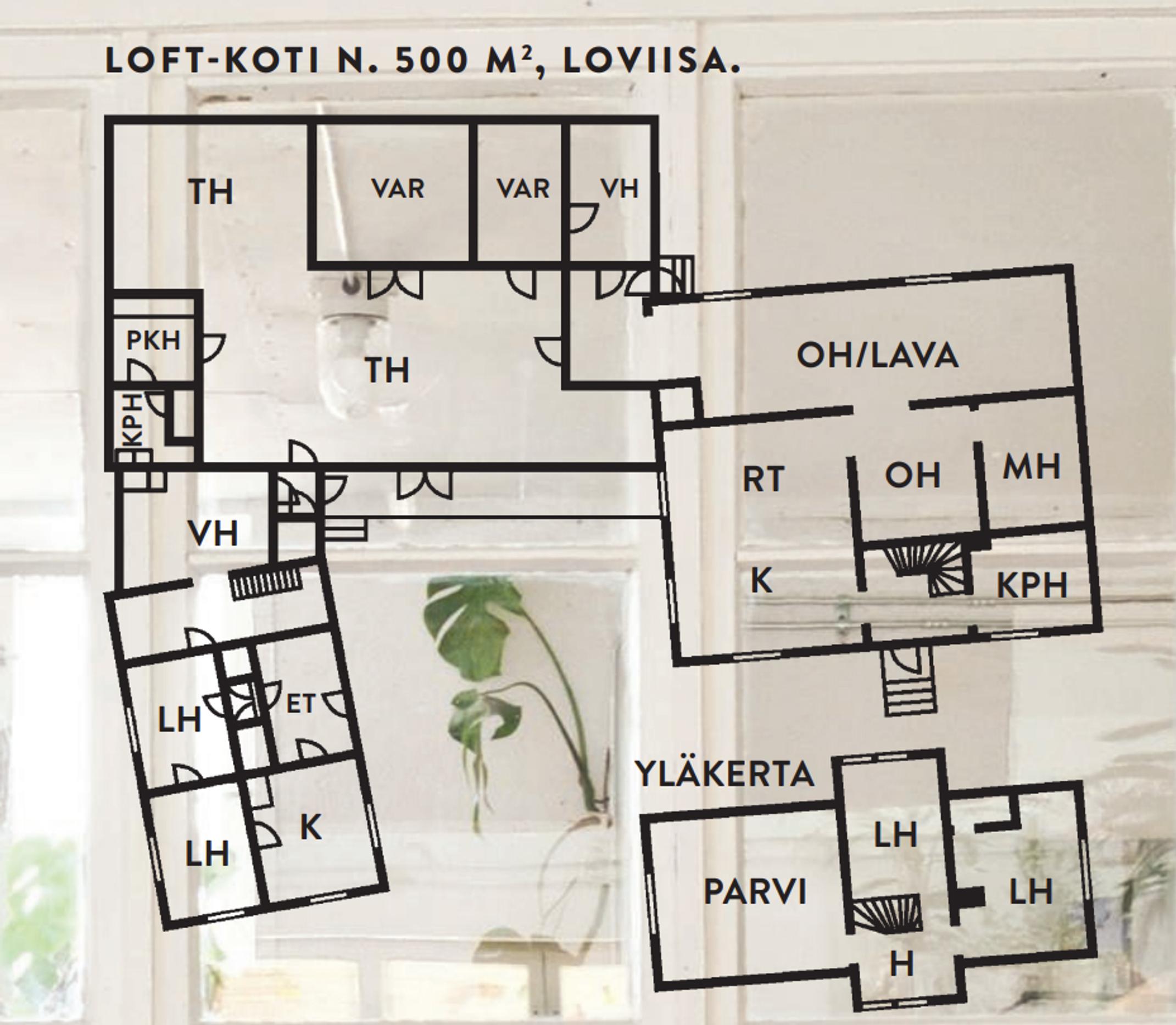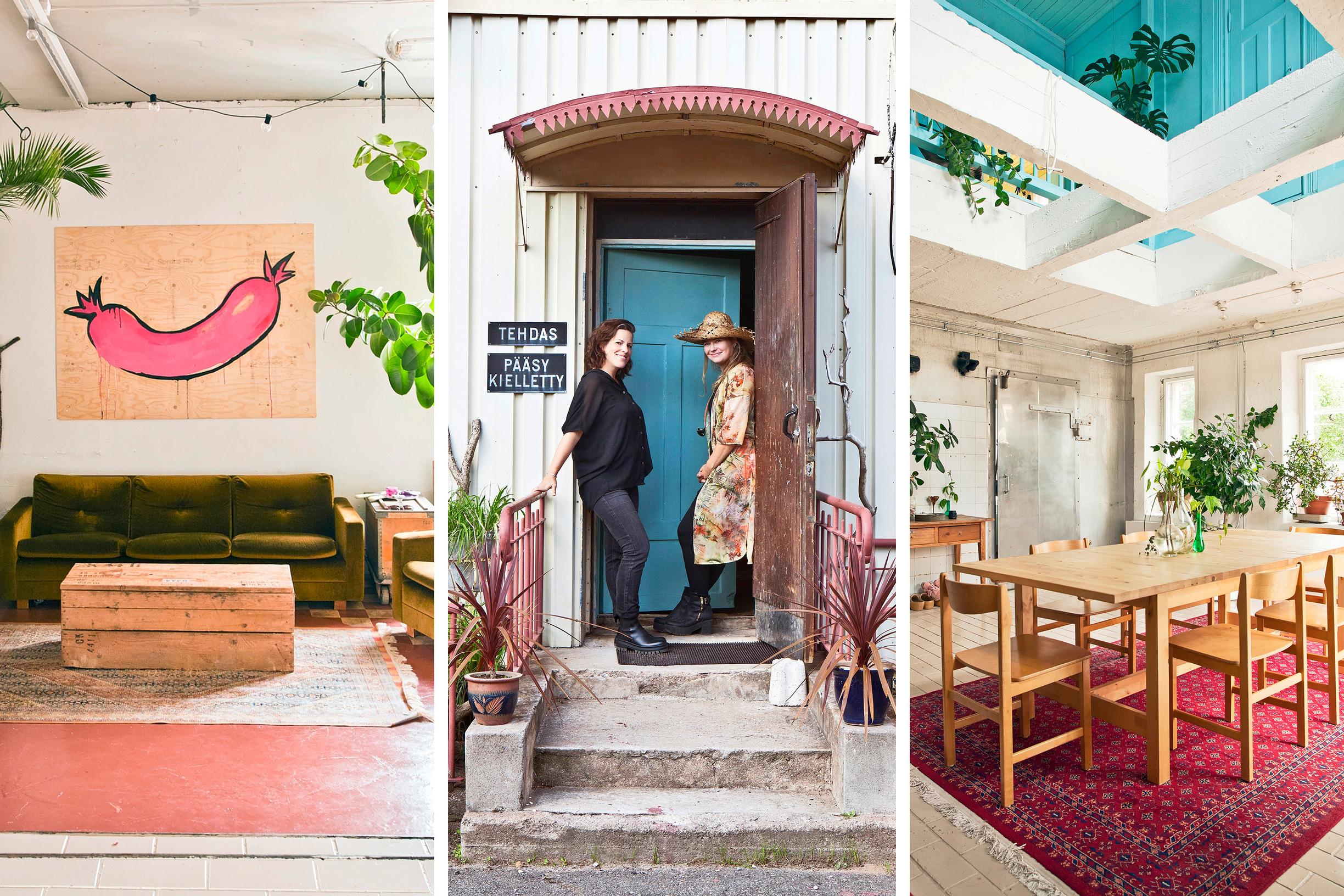
Former sausage factory becomes a home in a whirlwind renovation—only the toilet was bought new
Visual artist Pia Sirén and musician Mirella Pendolin transformed the former sausage factory in Loviisa, Finland, into a home for their blended family, where they sometimes host cultural events for the public. The 500-square-meter loft-style home provides space for spending time both alone and together.
Looking for an unusual home. That was the subject line of the email that visual artist Pia Sirén and musician Mirella Pendolin sent to a real estate agent in spring 2020. Nine months later, the couple got the keys to the former sausage factory in Loviisa. Built over four decades, the over-500-square-meter building with its winding spaces perfectly fulfilled the blended family’s desire for something out of the ordinary.
“It was important for us to find a building that could accommodate both of our families and allow us to spend time together while also giving our children space of their own. We also hoped to include Pia’s art studio and a space where I could teach my music students and host concerts—all under one roof,” Mirella says.
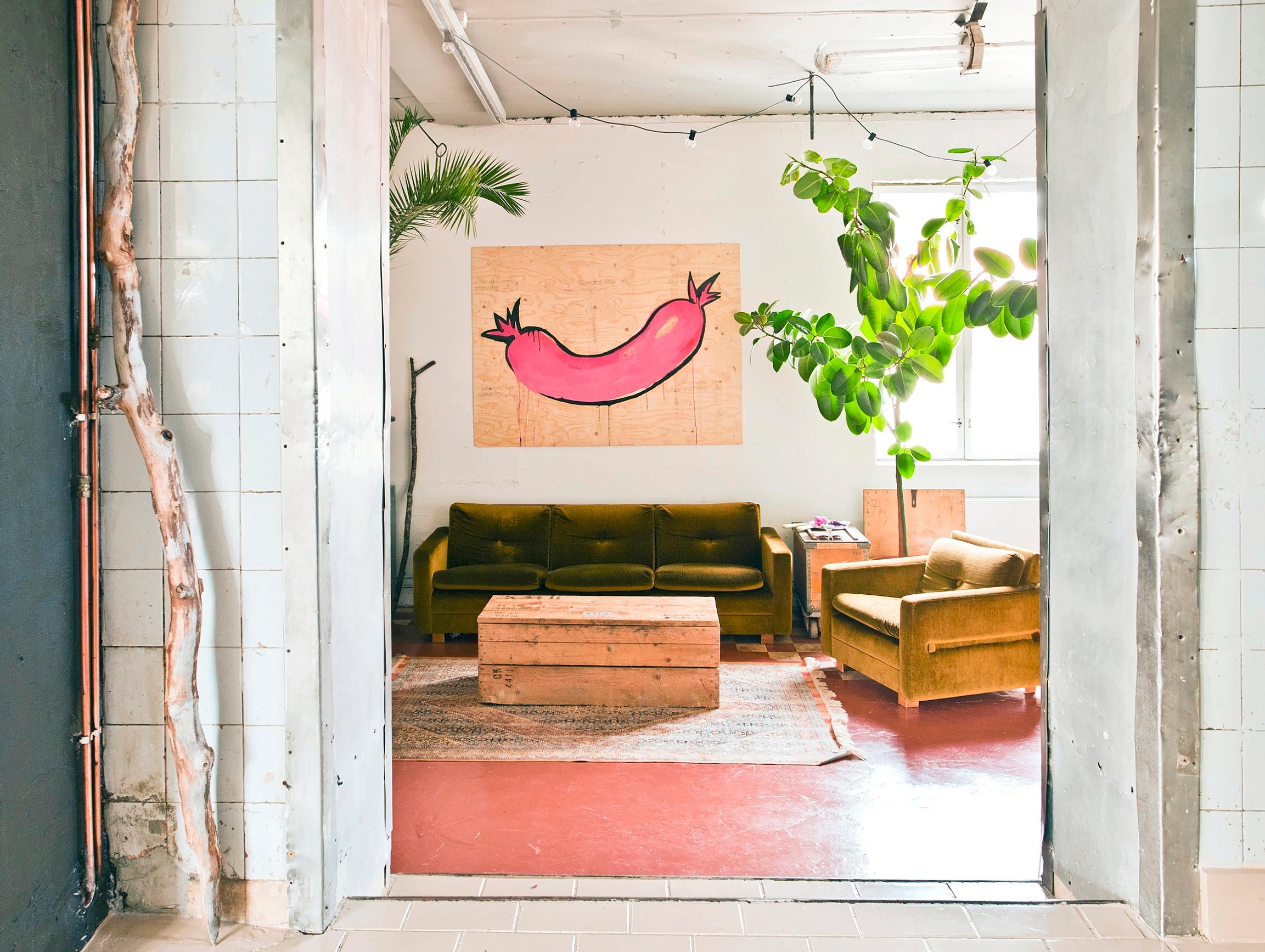
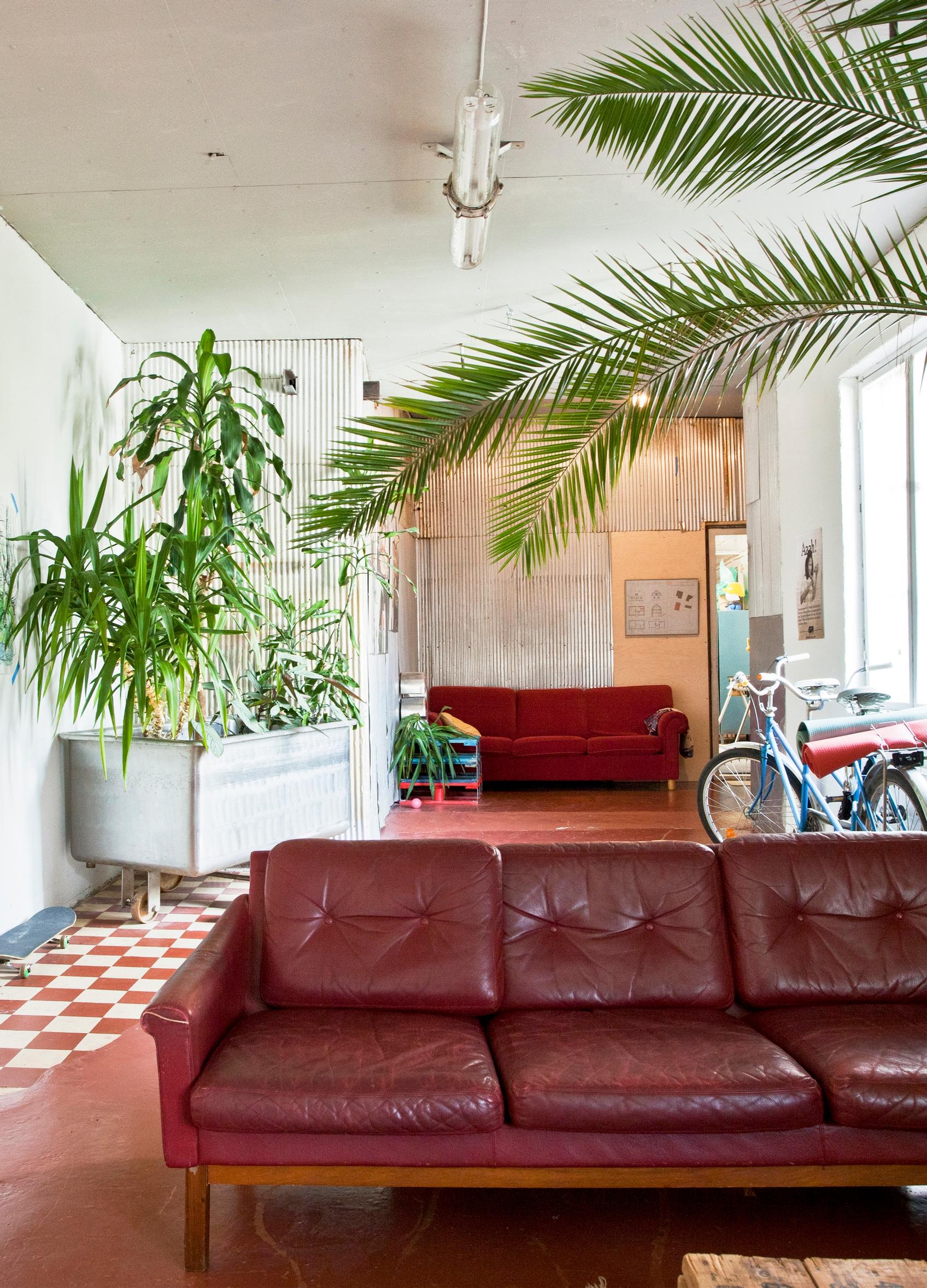
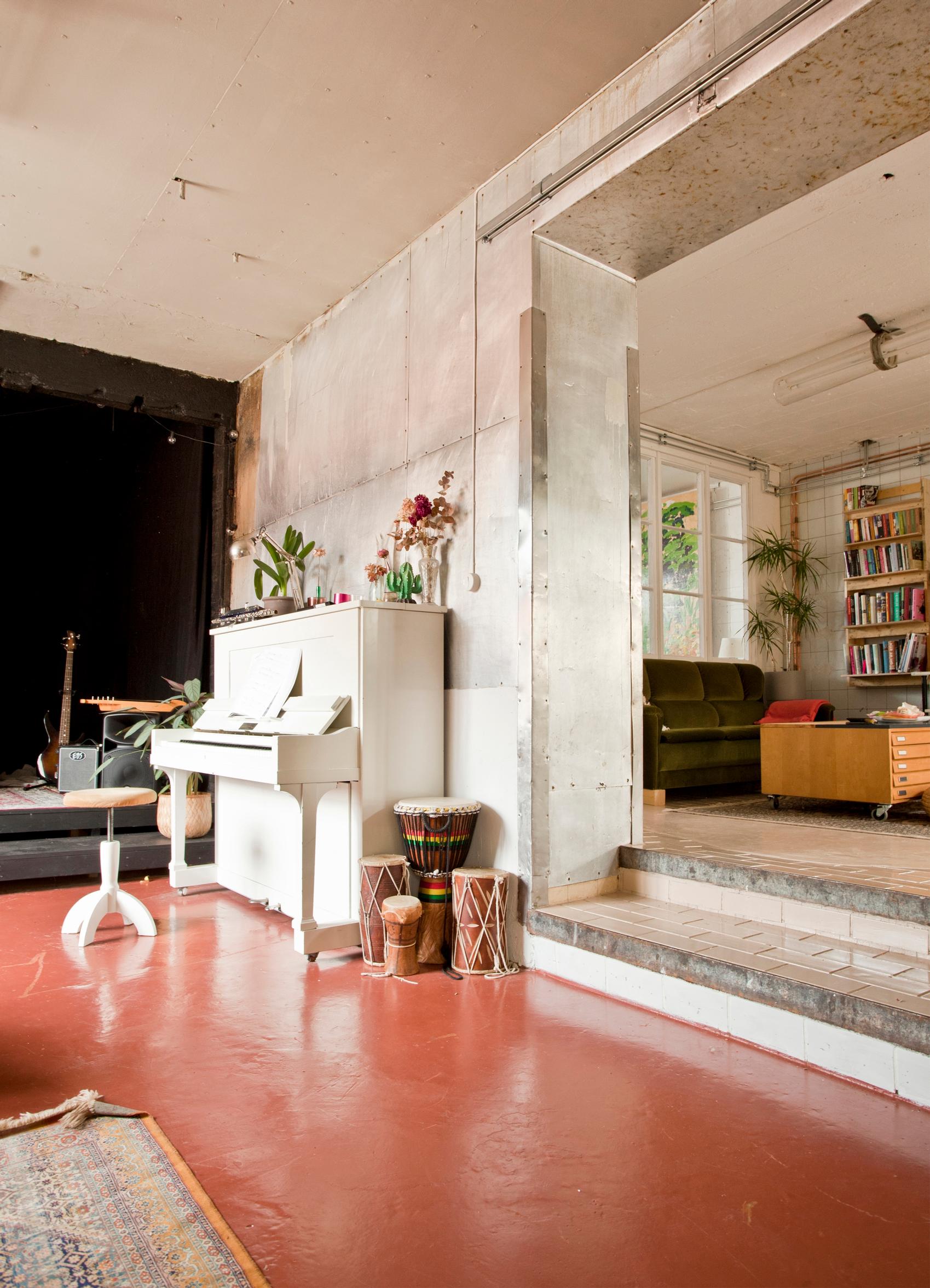
Completed in the 1930s, the mansard-roofed main building houses the shared living areas and the performance space with a stage on its first floor. Upstairs belongs to Pia’s sons, and the 1950s annex is the domain of Mirella’s daughters.
Traces of the building’s history are evident throughout this layered home. The turquoise-painted entryway leads through a solid steel door into the kitchen-living area, where a cast-iron factory clock adorns the brick wall. The vegetarian family hangs their pots from old meat hooks.
“Looking back while nursing my repetitive strain injuries, I’ve pondered where the line lies between madness and efficiency.”
The interior, made up of vintage finds and houseplants, looks like it evolved organically over the years. In reality, the factory was turned into a home during an intense, fast-paced renovation.
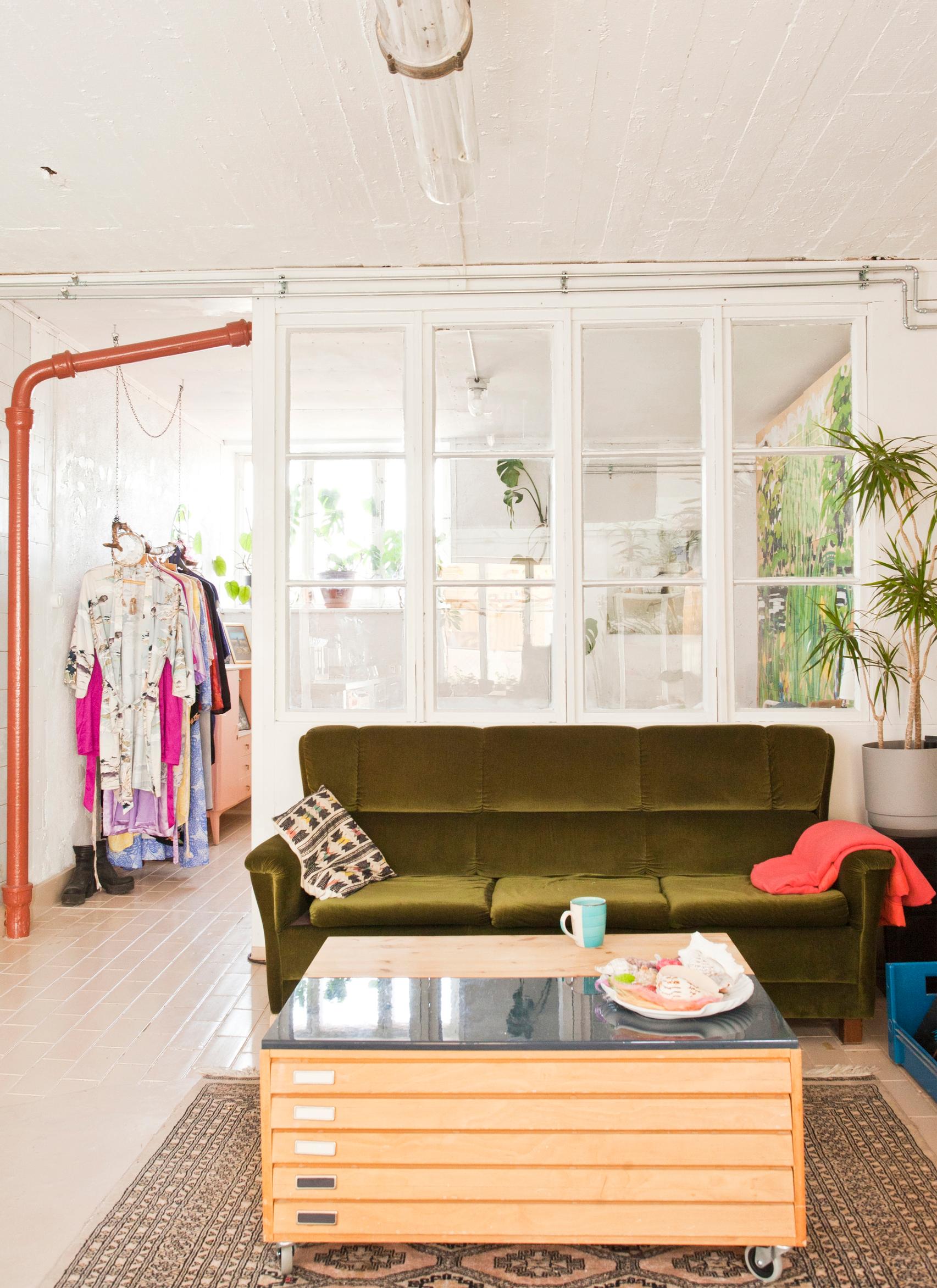
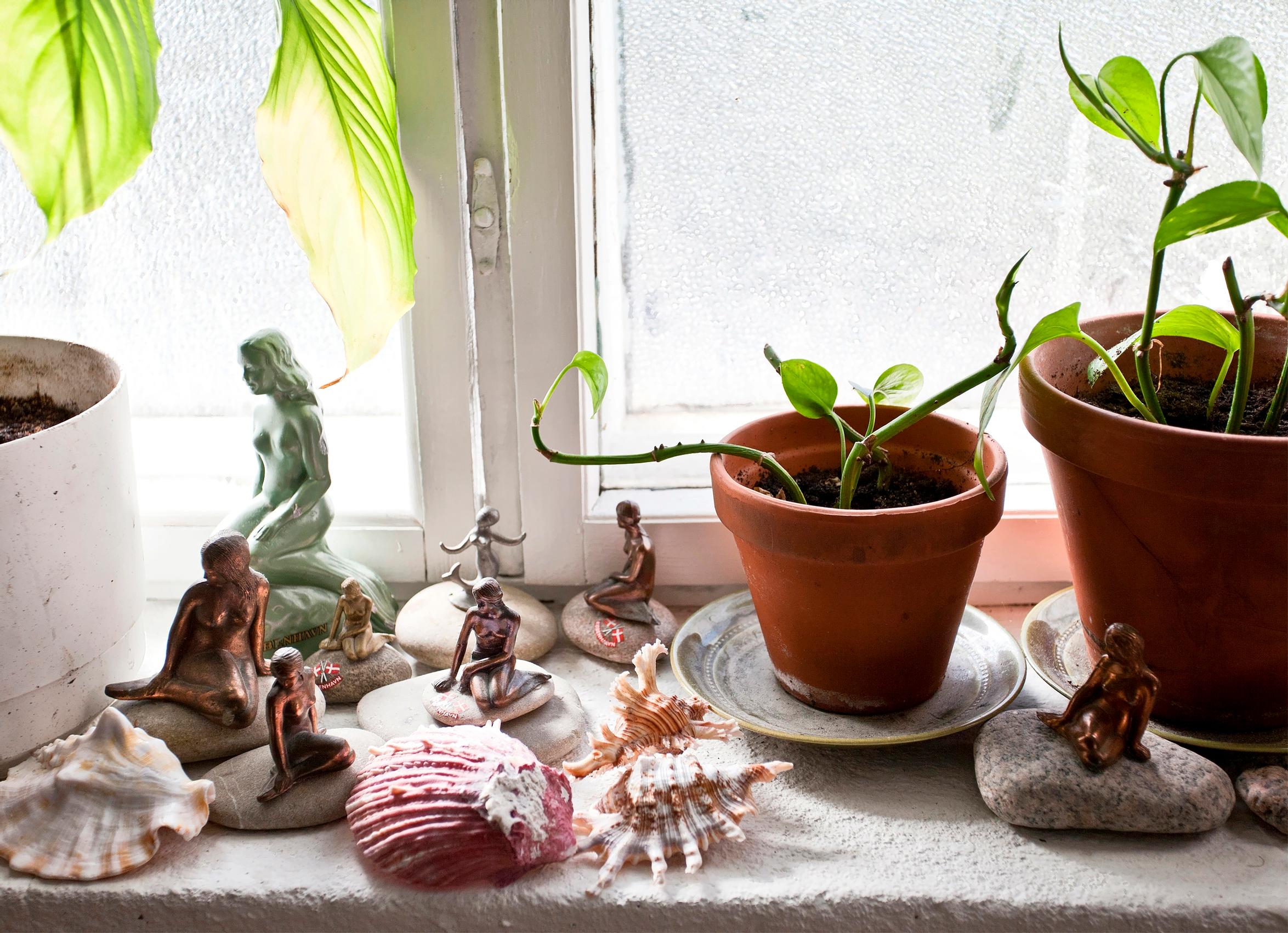
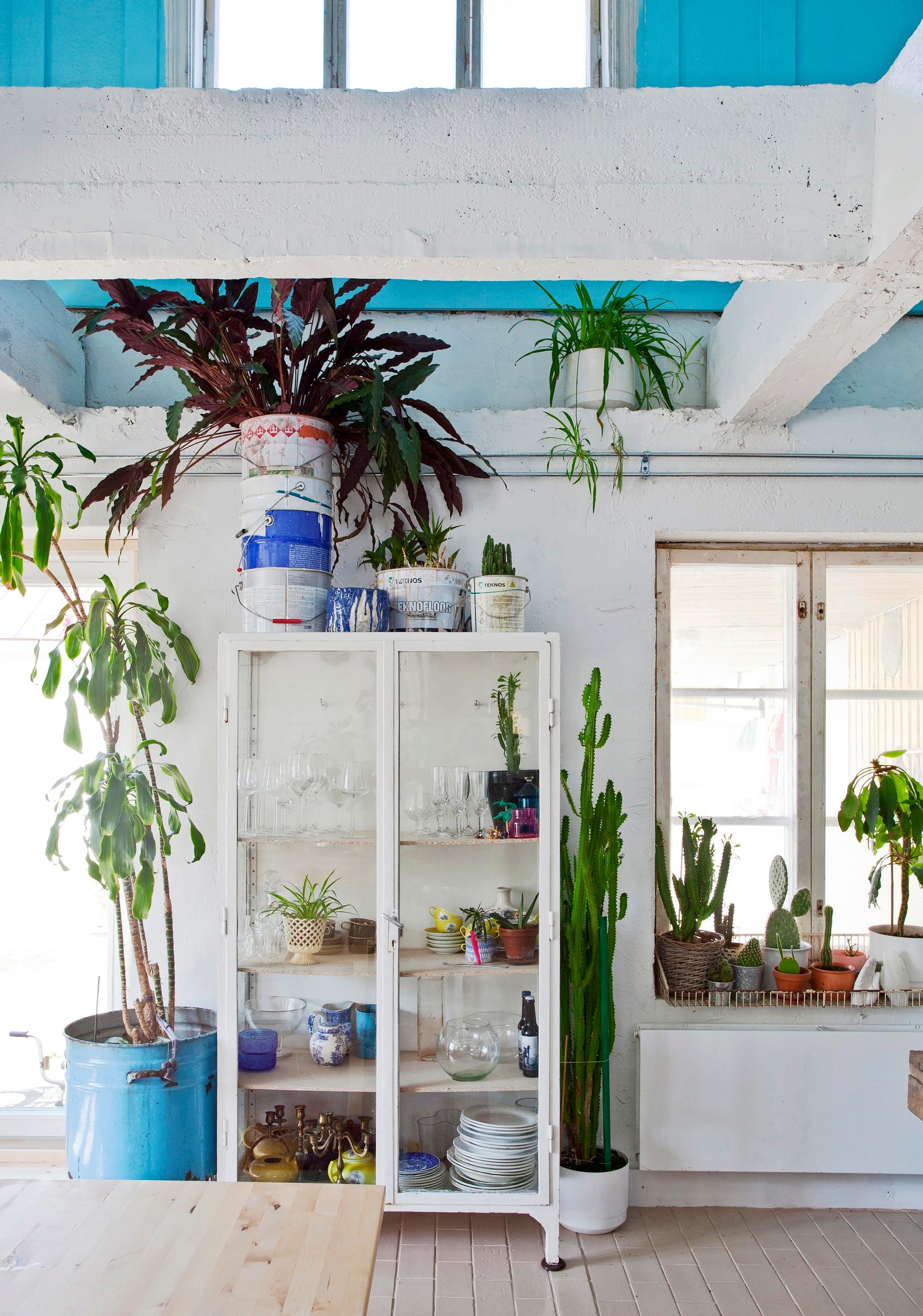
The couple planned and largely carried out the renovation themselves. Mirella came to the worksite each day after her music teaching job, while Pia devoted herself to the project full-time. A visual artist known for her spatial and site-specific installations, Pia tackled the renovation with the same intensity she brings to her art.
“I’m used to having just a couple of days to set up a large installation. I tackled the renovation with that same mindset, although instead of three days, I worked 15-hour days for three months straight. Looking back while nursing my repetitive strain injuries, I’ve pondered where the line lies between madness and efficiency,” Pia laughs.
In the end, the result was worth the effort.
“The project was endlessly inspiring. I had always rented before, so I never had the chance to choose exactly how my home would look. It was wonderful that we could decide everything ourselves, starting with where the kitchen would go.”
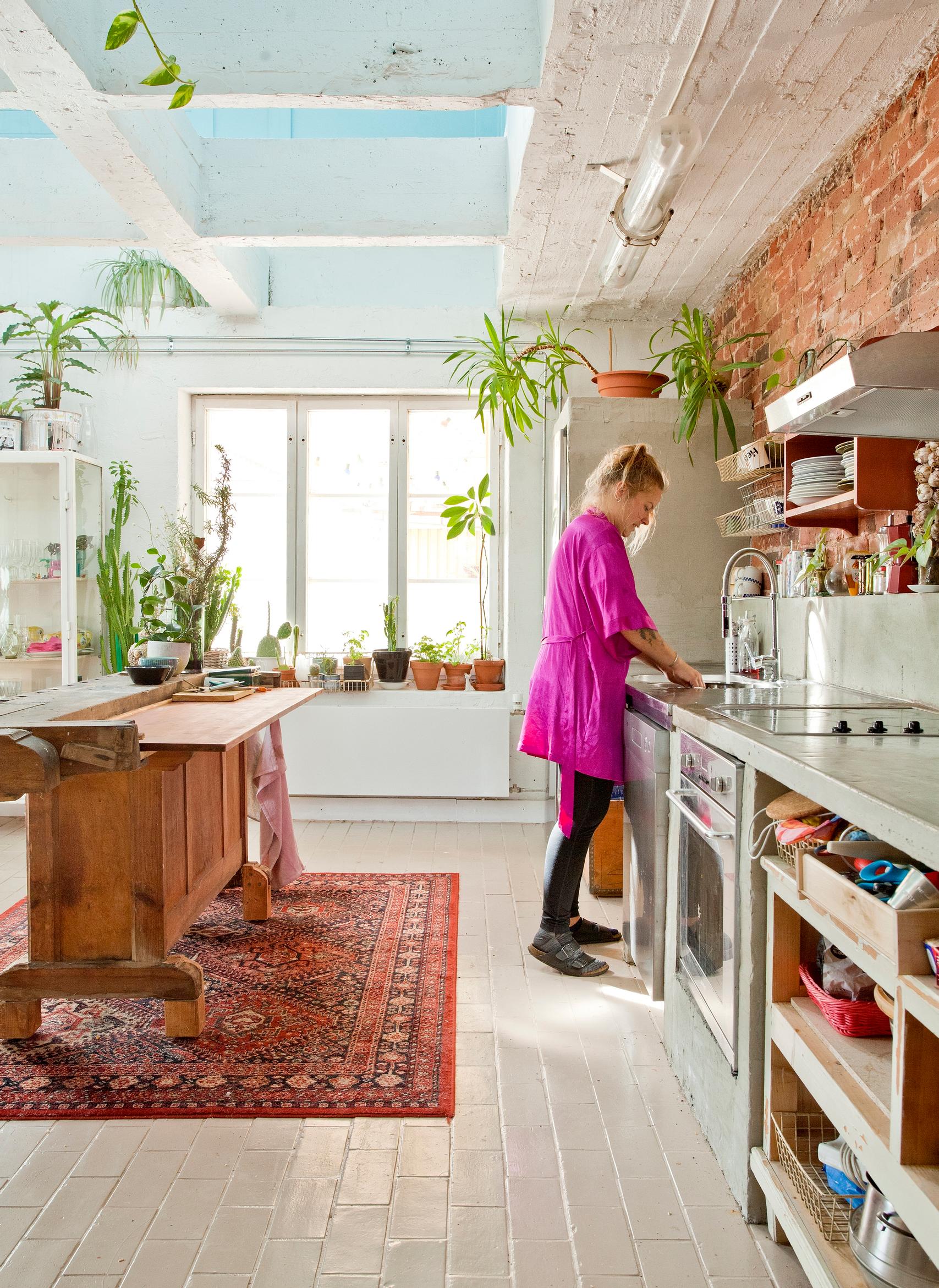
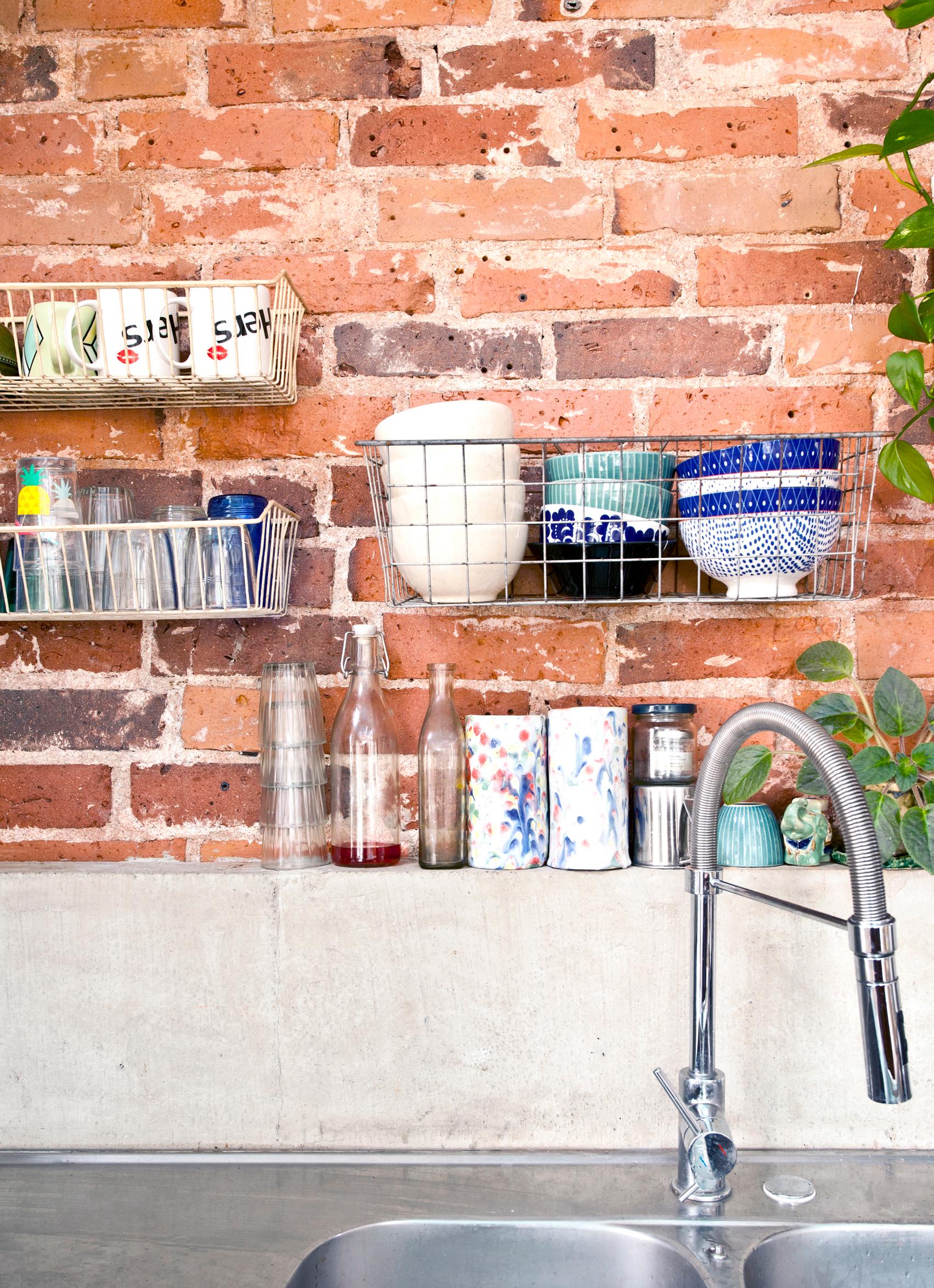
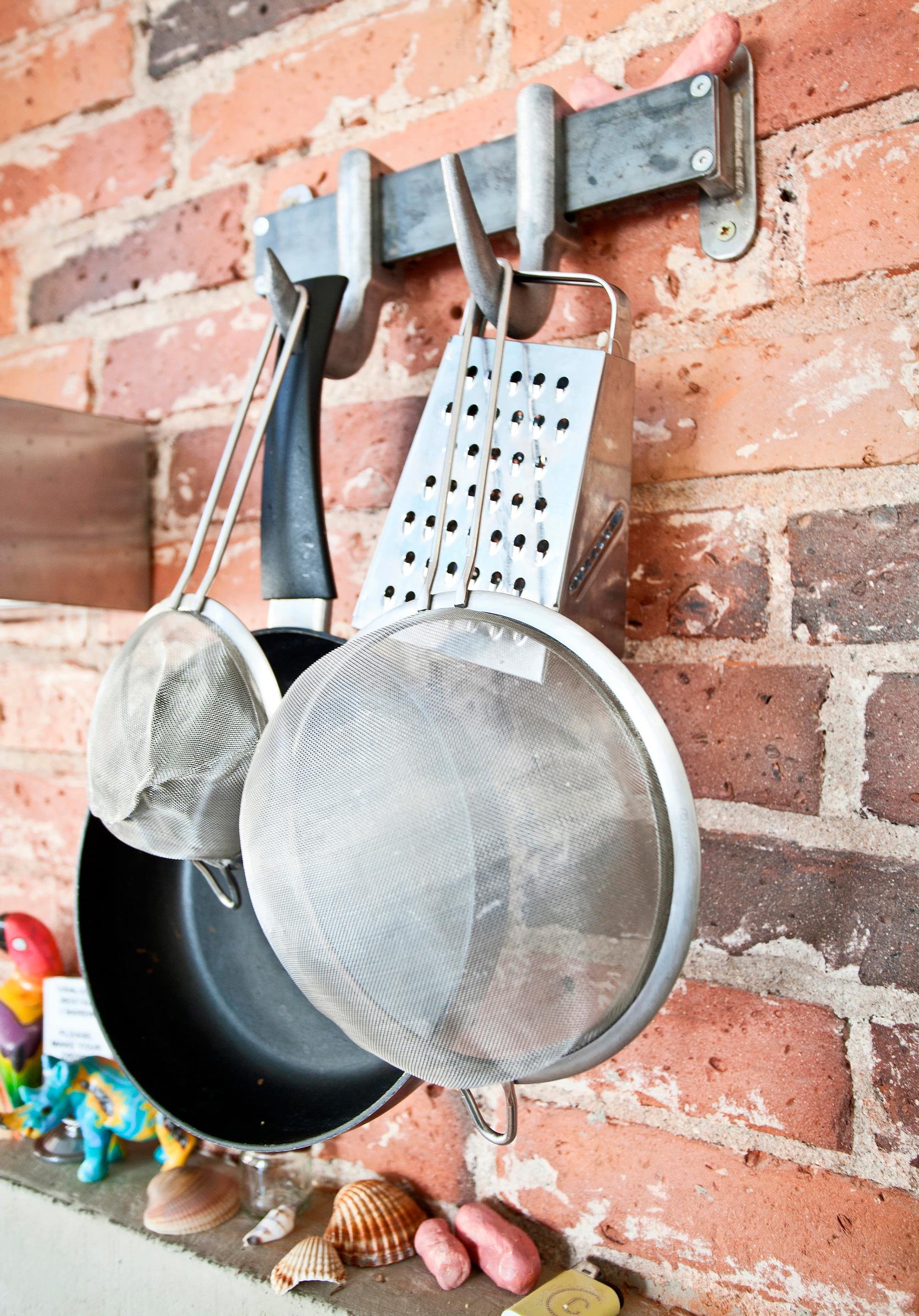
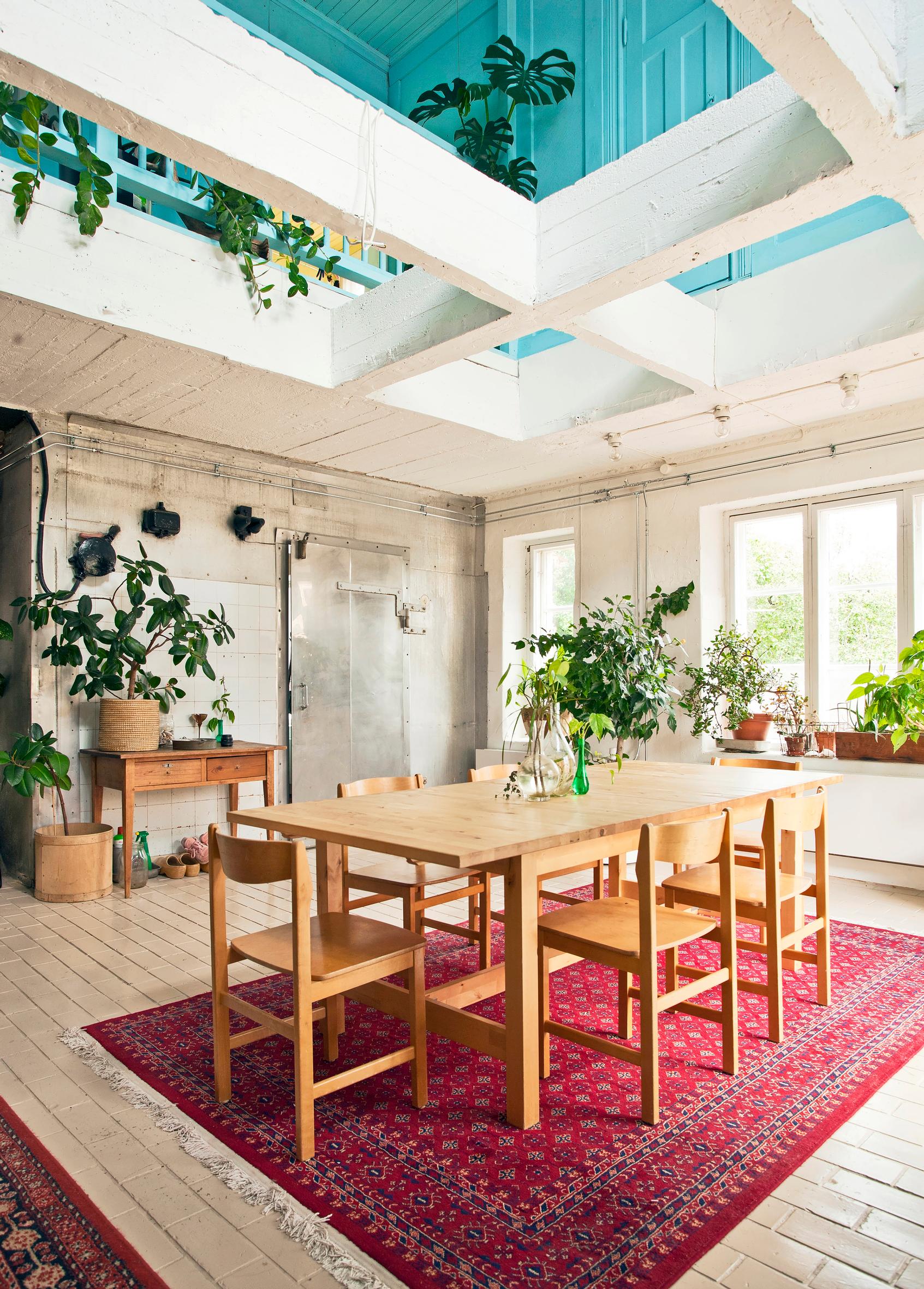
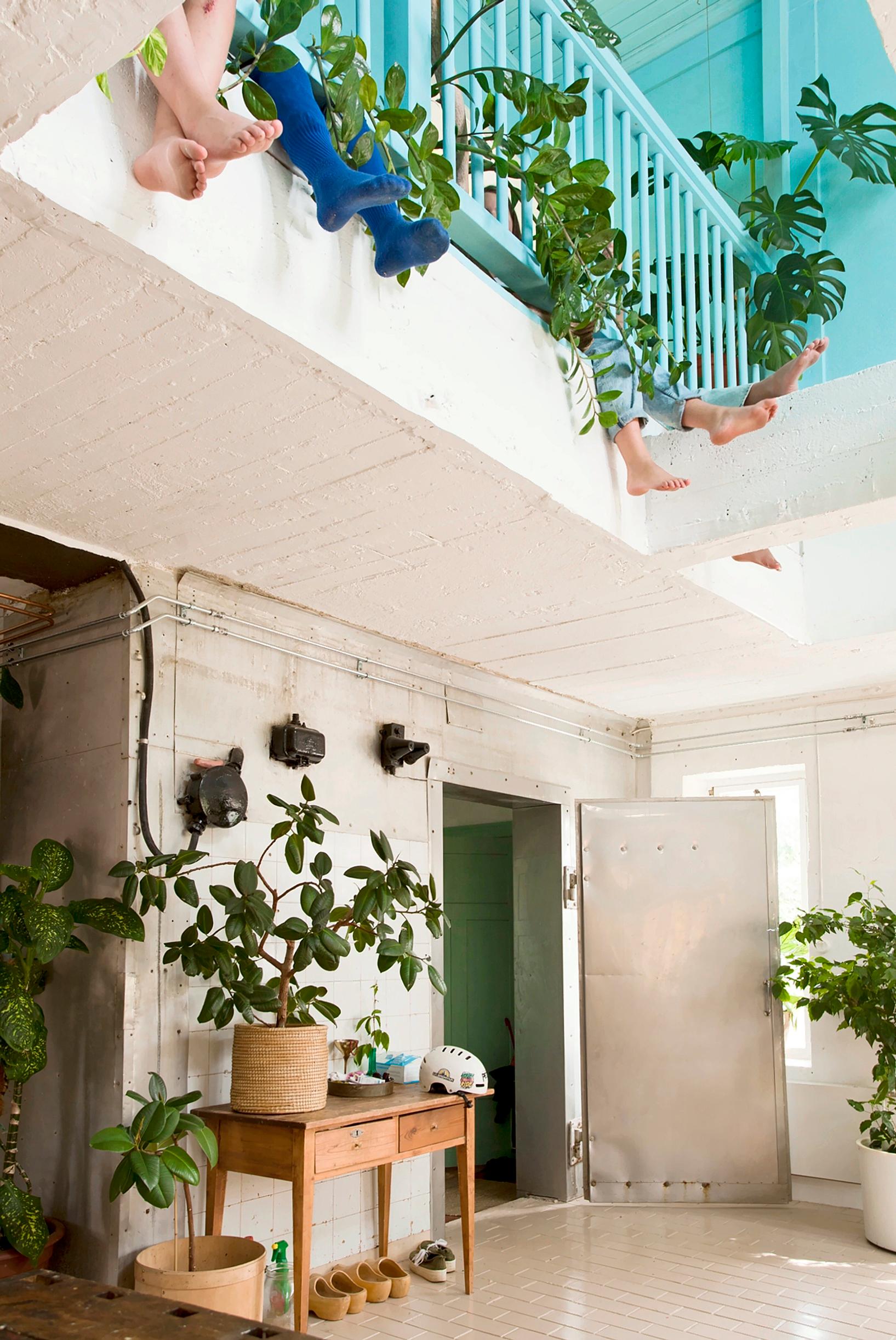
Pia, in particular, has a deep connection to the house—there may not be a single interior surface she hasn’t touched. With a bit of help, she also broke open the ceiling above the dining area. Now, between the concrete beams, you can glimpse a turquoise ceiling that calls to mind Mirella’s second homeland, Spain.
The space and the house’s details guided the renovation. Along with embracing the industrial style, the couple wanted a “paradise vibe” too. That’s why the original tile floor was painted a warm sandy color, and they sourced palm trees, as well as other plants that had outgrown more typical homes, from recycling groups.
The toilet is the only newly purchased item. Everything else, from appliances to furniture, is secondhand.
“Above all, it’s a matter of environmental principles. And our budget wouldn’t have allowed for all-new purchases anyway,” Mirella says.
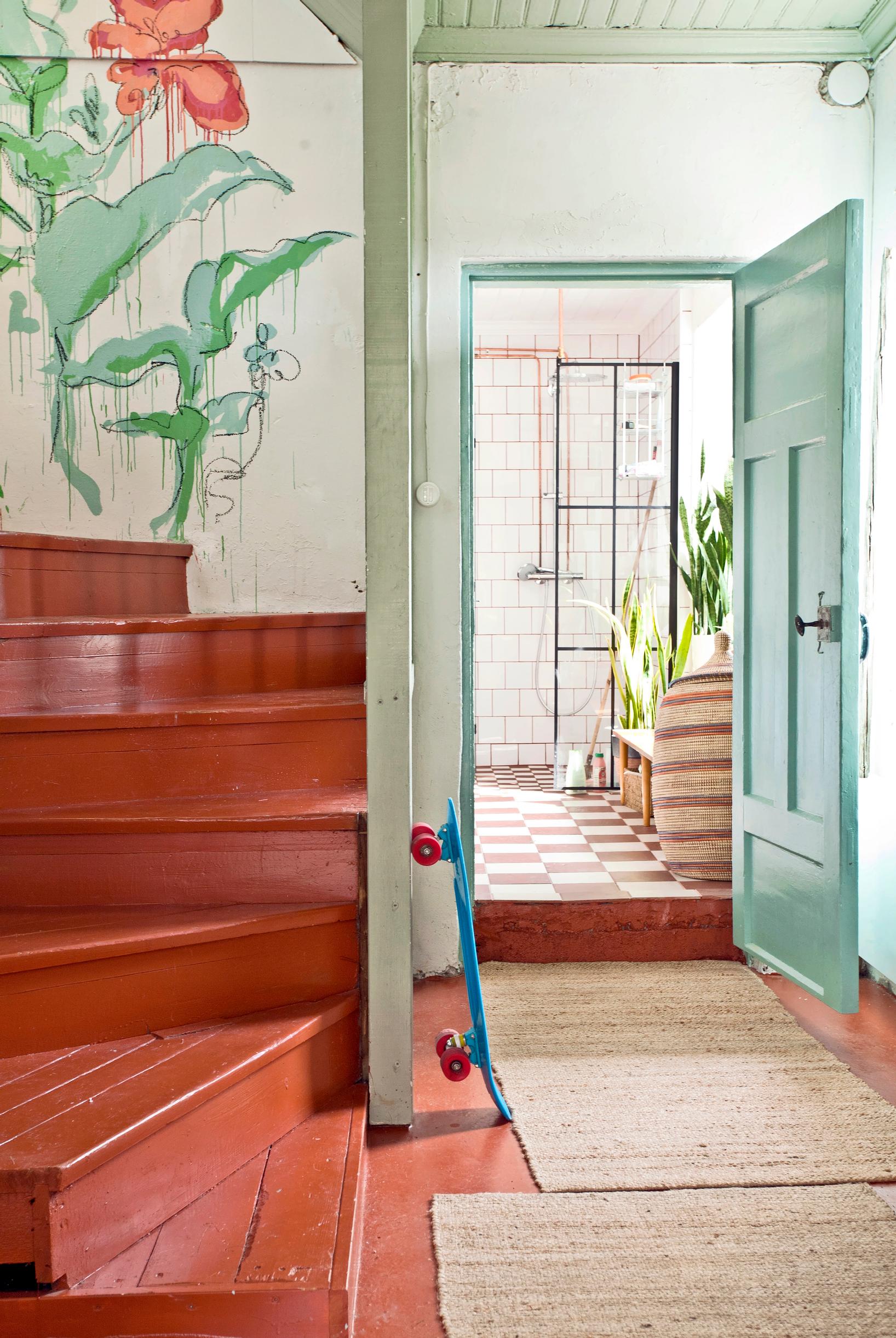
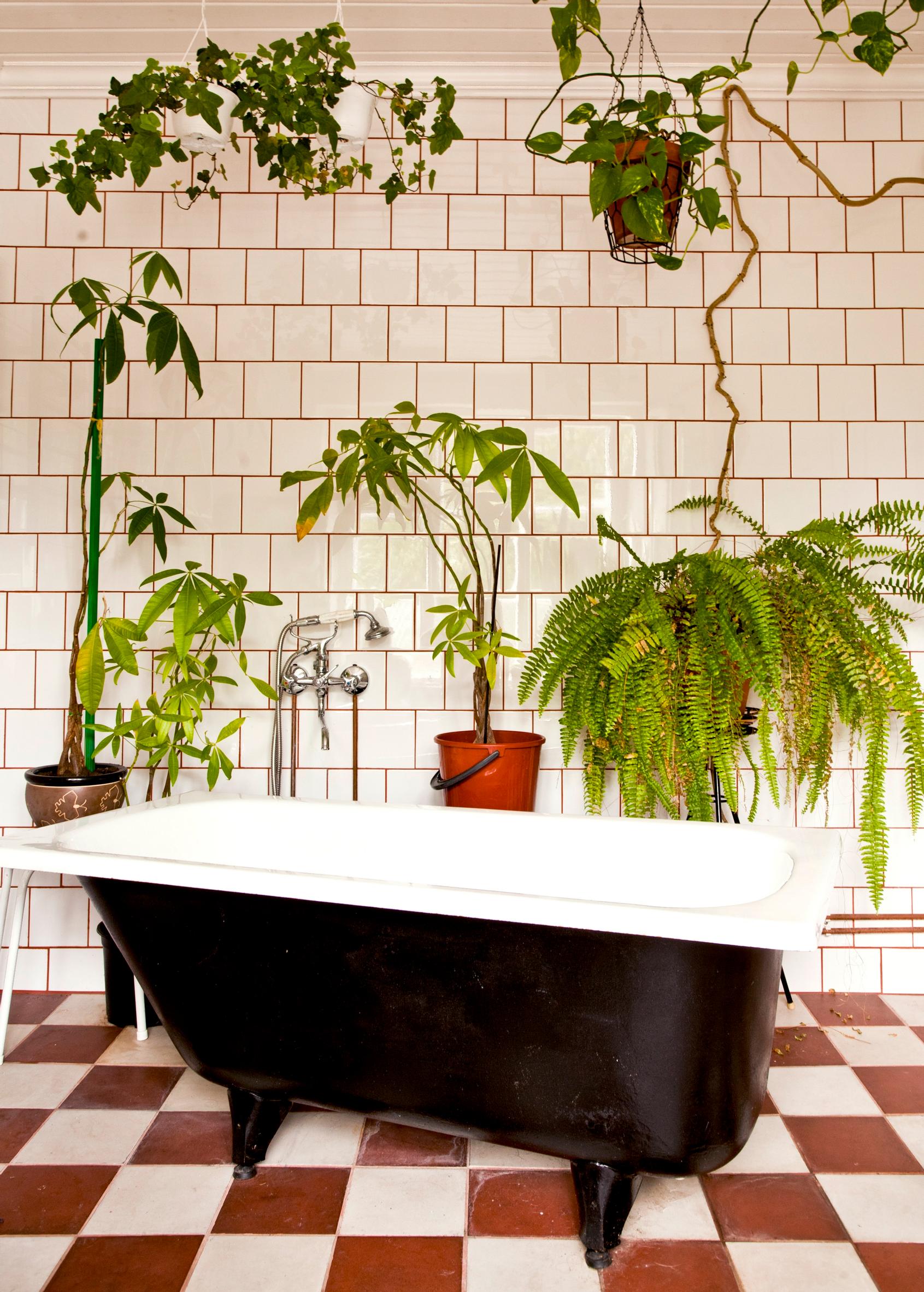
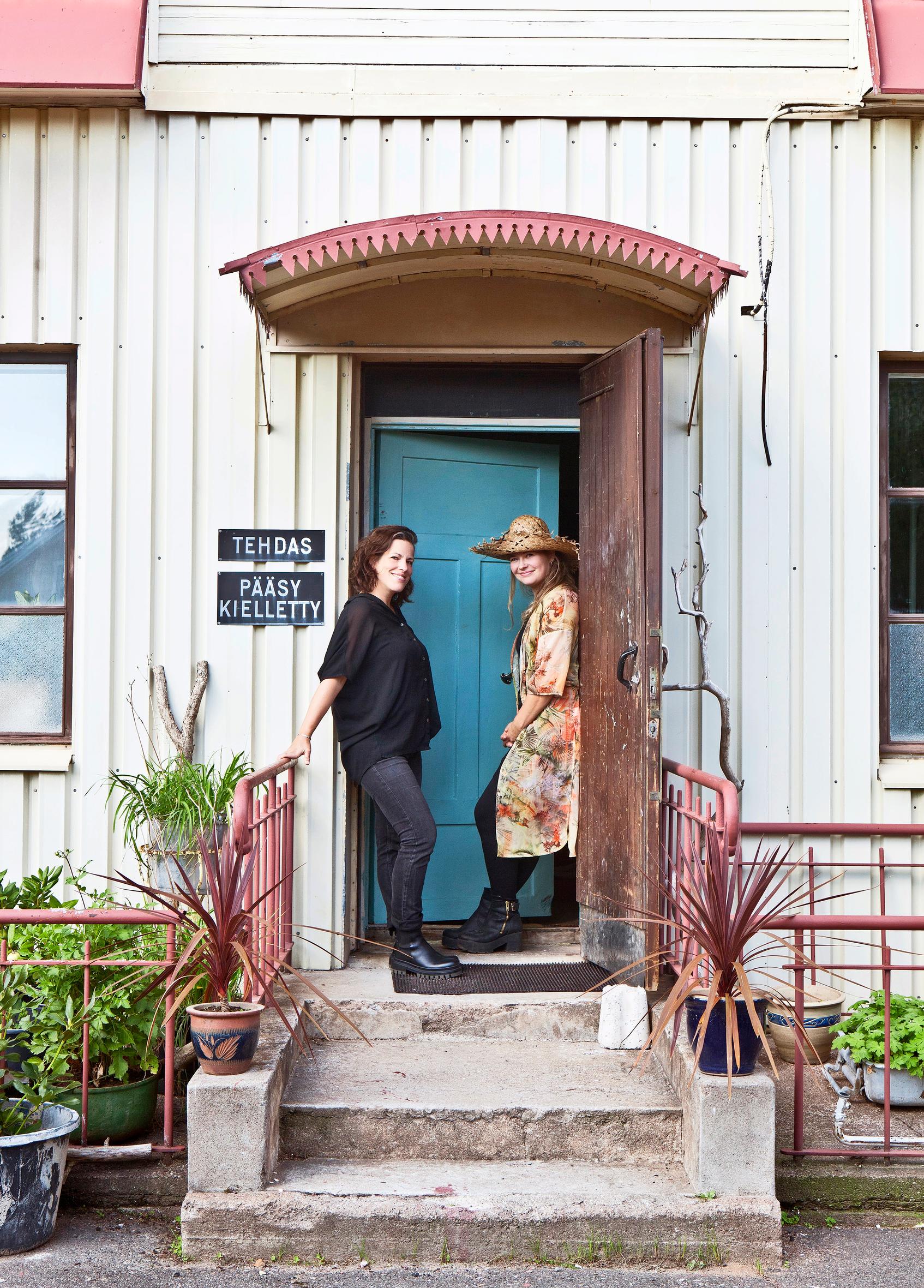
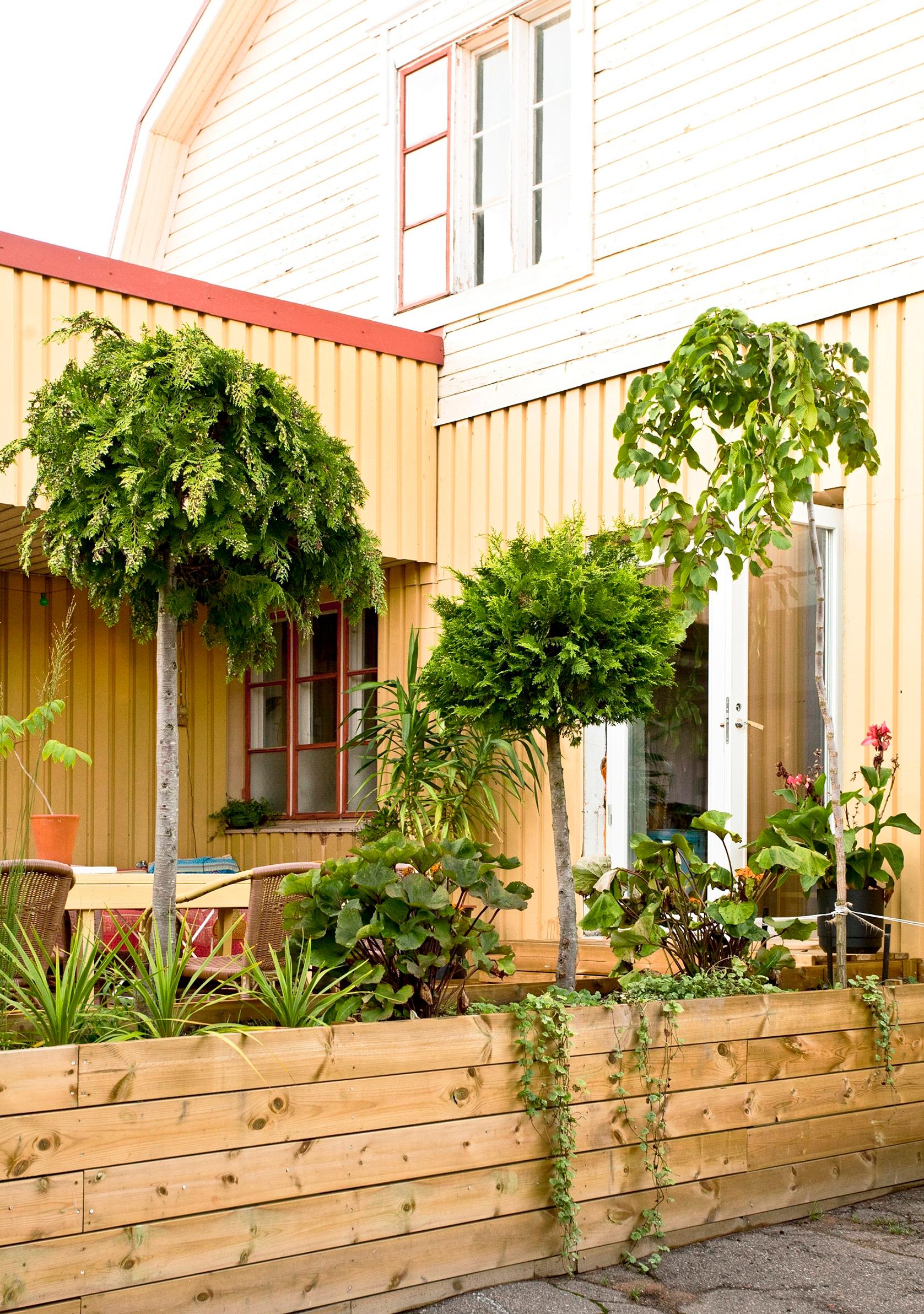
The interior solutions make creative use of materials found in the old factory, bringing a sense of spontaneity as well as character. A beautifully patinated wooden workbench became the kitchen island, and the factory’s metal baskets now serve as open shelving.
“Pia has a remarkable ability to envision spaces, thanks to her work. During the renovation, she was my eyes, because she can picture how everything will eventually come together long before I can.
Mirella trusted Pia’s suggestions—though she admits she was a bit worried about how the concrete countertops or terracotta-painted pipes would look. But when she saw the finished kitchen, with warm terracotta set off by turquoise and lush greenery, she was amazed.
“I see our home as one of Pia’s artworks.”
Pia also sees the home as a reflection of her artistic work.
“While I was smoothing the wall with a palette knife, I thought, ‘This is like a sculpture, and it’s my first permanent piece.’ The kids named it Nakkikartano.”
First and foremost, it’s a home for six people, where everyone has the space to be themselves. Yet Nakkikartano is also a communal house, where private and public blend together, when the doors are opened to the public for concerts on Mirella’s stage and art workshops in Pia’s studio.
